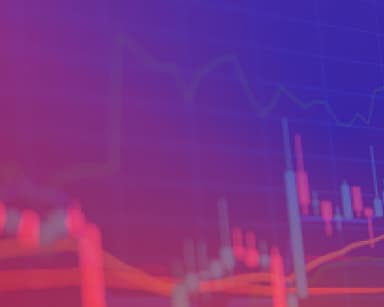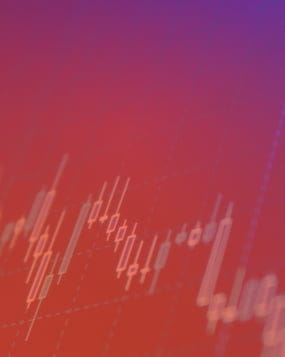What is silver trading?
Silver trading is the method of speculating on the price of silver in an attempt to profit by correctly predicting movements in its value. While traditional silver investing would involve buying and holding silver bars and coins, silver trading enables you to gain exposure to the market price without taking ownership of the physical metal.
Most silver trading takes place via futures, spot prices, shares and ETFs. You can take advantage of rising and falling silver prices using these instruments - the further the market moves in the direction you've predicted, the more you'd profit and the more it moves against you, the greater your losses.
After gold, silver is the most frequently traded precious metal asset due to its use in electronics, tableware and jewellery. There is also strong demand from investors, who view silver as a much more affordable asset than gold.
Ready to start trading silver? Open an account today.
What is the gold-silver ratio?
The gold-silver ratio is used to assess the proportional relationship between the two precious metals at any given point in time. It measures how much silver is needed to buy an ounce of gold using spot prices. For example, if the ratio is 66, it means you’d need 66 ounces of silver to buy one ounce of gold.
The gold-silver ratio typically rises during bear markets and falls during bull markets. Gold becomes more expensive than silver in economic downturns, as although both are safe-haven assets, gold experiences significantly more attention than silver. Once the economy begins to recover, gold’s value falls back and trades nearer silver’s value again.
Gold has historically always been worth more than silver, but this relationship isn’t fixed. While the price of each metal is influenced by similar factors, this doesn’t mean their prices are correlated.
Discover how to start gold trading.
How to trade silver
You can start trading silver futures, spot prices and stocks in just a few easy steps:
- Learn how to trade CFDs
Find out how CFDs work and the benefits of trading derivatives
- Create an account with City Index
Get started trading on live silver markets, or practise trading first in a risk-free demo account
- Search for the commodity you want to trade
Find silver futures or silver spot in our award-winning platform
- Decide whether you want to go long or short
Click ‘buy’ if you think silver will rise in price, and ‘sell’ if you think it will fall
- Open your position
Enter the market by clicking ‘place a trade’, you may want to consider adding a stop loss to your trade to manage your risk
- Monitor and close your trade
Use analysis to stay up to date with any price movements and identify an exit point for your position
When you trade silver, you’ll be using derivative products to speculate on the underlying market price instead of taking ownership of bullion itself. There are multiple ways you can trade silver with us, including via futures, spot prices, stocks, and ETFs.
Silver futures
Futures contracts are the main way to trade silver. A futures contract is an agreement to buy or sell silver for a set price on a future date. While futures contracts can be used to take possession of the physical commodity, you don’t necessarily have to – they can also be settled in cash.
Traders who hold their silver positions open to the expiry date will either settle their position or roll it over to the next delivery.
Silver futures are available to trade on exchanges across the world, most famously the COMEX exchange in the US. Futures contracts are standardised for quality and quantity – in the case of silver, a full contract is worth 5000 troy ounces of silver, an emini contract 2500 troy ounces, and a micro contract 1000 troy ounces.
You can trade silver futures with us using CFDs on the underlying market. You’d have the same monthly and quarterly expiry dates, and no overnight funding fees to pay – all costs are factored into the spread at the start.
Learn more about futures trading.
Silver stocks and ETFs
Trading silver stocks and ETFs is a popular way to get indirect exposure to the price of the precious metal.
Silver stocks can include companies that are involved in exploration and mining, as well as those involved in the production of silver for industrial purposes. These companies will usually also be involved in mining for other metals, as silver is a common by-product of other discoveries.
Silver stocks will usually have a positive correlation with the commodity’s price – as when demand for silver rises, these companies earn more from their discoveries. However, as there are a range of metals to consider, it’s important to keep an eye on the demand for those assets too. The company’s growth and stock returns will also influence the share price, and can be influenced by everything from news and earnings releases to production costs and hedging activities. Some major silver industry players include Endeavour Silver Corp and Barrick Gold.
Alternatively, you could get broader exposure to the silver market using an exchange traded fund (ETF). ETFs are bought and sold like a stock, except they take their underlying value from silver or groups of silver stocks.
Silver trading strategies
Silver trading strategies are often based on taking advantage of high volatility and economic uncertainty, and periods of more stable pricing. This means that on the whole, traders will use trend trading and range trading strategies.
- Trend trading silver – to create a trend trading strategy for silver, you’d need to first determine which direction the market price is moving in. The aim is to profit from the body of a trend, instead of entering at the start of the move and exiting at the end. Most traders will set stops and limits in order to automate their strategy, predetermining their acceptable levels of profit and loss
- Range trading silver – this strategy is used when the silver market is in a period of consolidation and is moving between known levels of support and resistance. In price charts, this will appear as a sideways price move. By identifying the levels of support and resistance using technical indicators, you can profit from the smaller movements between these two levels
FAQs
How can I buy silver stocks?
You can buy silver stocks via a broker or derivatives provider. When you invest in silver stocks, you’ll take ownership of the underlying shares – you’d pay the full value of the position upfront, profiting if the price rises or if the company pays dividends.
Alternatively, you can buy silver stocks with derivative products such as CFDs. In doing so, you wouldn’t be taking ownership of the shares, but rather speculating that the market price will rise. Derivative products also enable you to short sell silver stocks – profiting if their price falls.
Learn more about CFDs.
Where can I buy silver at the spot price?
Buying silver at the spot price is usually done via a broker who can interact with a metals exchange on your behalf. However, there’s a lot more that goes into the physical transaction than just the metal alone, such as refining the metal into bullion, so you’ll likely buy silver at just above the spot price.
In doing so, you wouldn’t be taking ownership of the shares, but rather speculating that the market price will rise. Derivative products also enable you to short sell silver stocks – profiting if their price falls.
How do you trade silver futures?
You can trade silver futures by opening an account with a broker, and either entering into a futures contract or speculating on the market price via derivatives.
Silver futures contracts are standardised agreements to exchange silver for a set price on an agreed date. Usually a standard contract is worth 5000 troy ounces of silver. At the point of expiry, the contract is either settled – physically or in cash – or is rolled over to the next expiry date.








